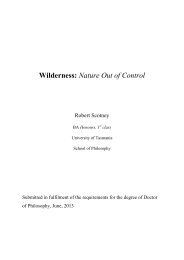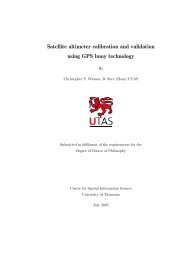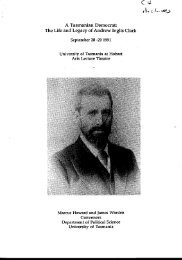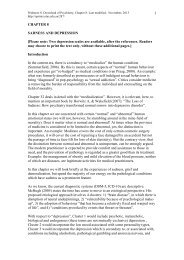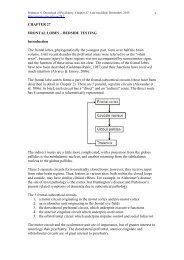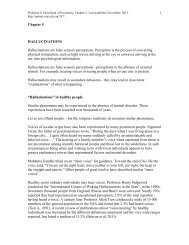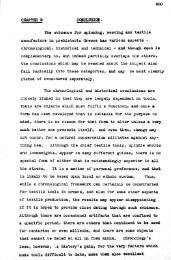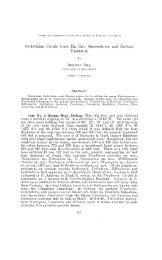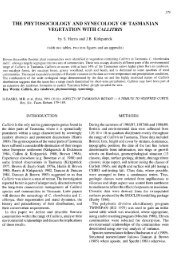PDF (Chapter 4: Delusions and Delusional Disorder) - UTas ePrints
PDF (Chapter 4: Delusions and Delusional Disorder) - UTas ePrints
PDF (Chapter 4: Delusions and Delusional Disorder) - UTas ePrints
You also want an ePaper? Increase the reach of your titles
YUMPU automatically turns print PDFs into web optimized ePapers that Google loves.
Pridmore S. Download of Psychiatry, <strong>Chapter</strong> 4. Last modified: November, 2013<br />
http://eprints.utas.edu.au/287/<br />
7<br />
from gangs or organizations, 2) belief (particularly by the male) of infidelity of the<br />
spouse, 3) belief (particularly by females) that a high status individual is in love with the<br />
patient, 4) belief of a life threatening disease, <strong>and</strong> 5) belief of an unattractive bodily/facial<br />
deformity (in DSM5, this last example has been removed from <strong>Delusional</strong> disorders <strong>and</strong><br />
placed under Obsessive-Compulsive <strong>and</strong> Related <strong>Disorder</strong>s).<br />
Successful evolution requires the transmission of genes, which is better achieved if the<br />
individual lives a long life <strong>and</strong> is attractive to members of the opposite sex. Accordingly,<br />
the 4 categories of delusional disorder may be linked to the facts that in the ancestral<br />
environment, 1) homicide by gangs (other tribes) was a major cause of mortality, 2)<br />
infidelity by the female spouse meant the supportive male was contributing to the welfare<br />
of the genes of another male, <strong>and</strong> 3) presence of disease, or 4) deformity may reduce<br />
attractiveness to members of the other gender, <strong>and</strong> thus reduce the chances of passing on<br />
genes.<br />
[The above touches on the topic of “Theory of Mind” which is discussed in greater detail<br />
in <strong>Chapter</strong> 33.]<br />
The delusions of schizophrenia are frequently bizarre <strong>and</strong> non-systematized. This may<br />
reflect the presence of disorder of the form of thought, that is, where there is loss of<br />
logical connection between ideas.<br />
The delusions of both delusional disorder <strong>and</strong> other disorders often have some gr<strong>and</strong>iose<br />
content. It is has been observed that for a delusion of persecution (bizarre or otherwise) to<br />
be present, the individual must be “important” enough to warrant the attention of others.<br />
Unknown prevalence of delusional disorder<br />
The prevalence of <strong>Delusional</strong> disorder is uncertain. People with this disorder can often<br />
function reasonably well in the community. Lacking insight, they usually do not believe<br />
they have a mental disorder <strong>and</strong> do not go to the doctor for help. Feeling persecuted, they<br />
often avoid contact with others <strong>and</strong> try to attract as little attention as possible. In large<br />
blocks of flats there are often people who have many locks on their doors, who believe<br />
that the neighbours come into their residences <strong>and</strong> move things around or steal things<br />
during the night. Some people with delusional disorder are well known to the police as<br />
they make frequent calls about being persecuted. Possibly, most “patients” never speak of<br />
their persecution. Elderly sufferers are occasionally encountered who have been crippled<br />
by their delusions for decades.<br />
Psychology<br />
Until recently, it has been believed that <strong>Delusional</strong> disorder is not associated with<br />
cognitive deficits. However, a recent study (Ibanez-Casas et al, 2013) found, in a large<br />
cohort of people with this disorder, significant deficits in most cognitive tests.



